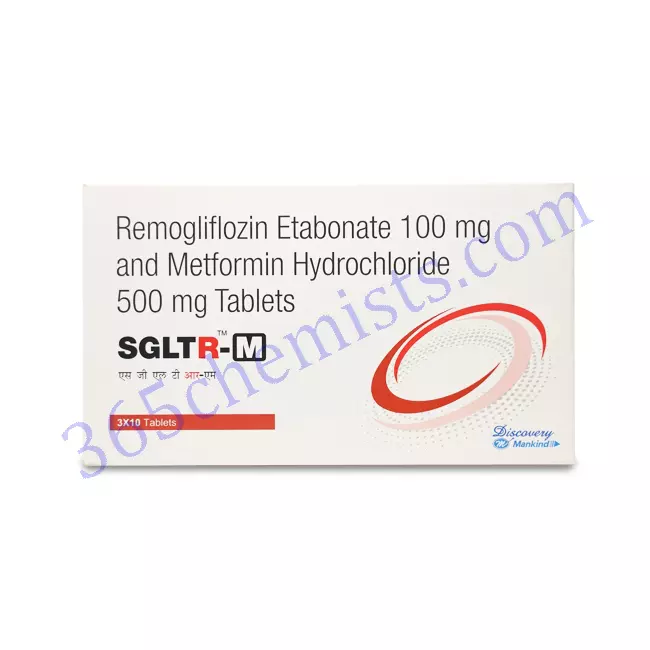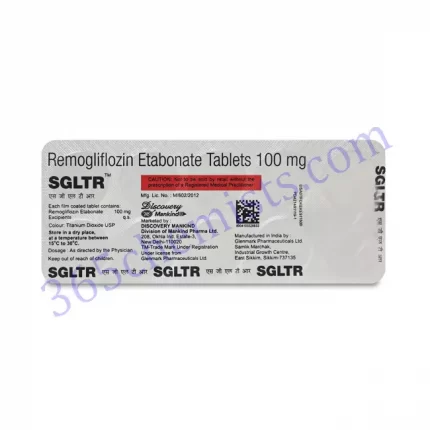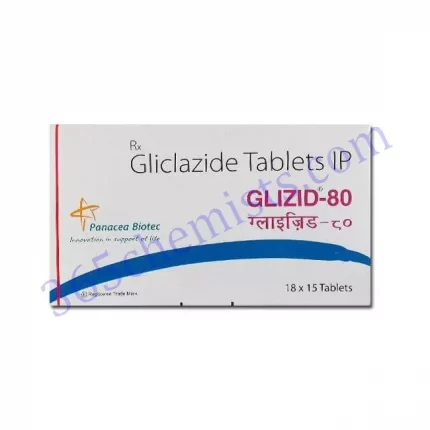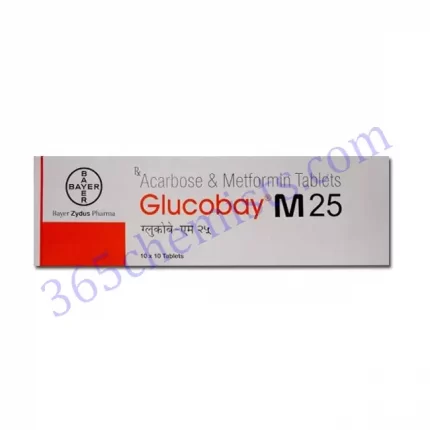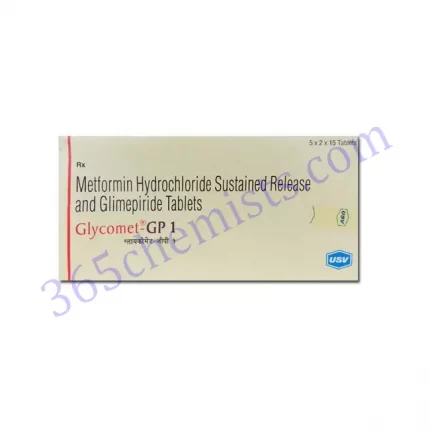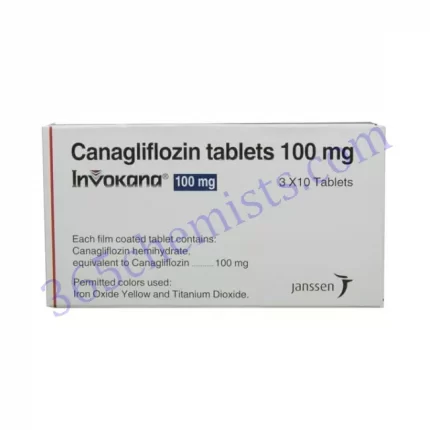SGLTR-M Tablet (Remogliflozin 100mg/Metformin 500mg): An Effective Combination for Managing Type 2 Diabetes
A beneficial drug for the treatment of type 2 diabetes mellitus is the SGLTR-M Tablet, which includes a combination of remogliflozin and metformin as its active ingredients. This page provides a detailed overview of SGLTR-M Tablet, focusing on its components and elaborating on its mode of action, as well as the therapeutic benefits and possible adverse effects that it may produce.
Composition
The SGLTR-M Tablet contains both remogliflozin and metformin, which are the two active components. Metformin is a pharmaceutical that belongs to the class of drugs known as biguanides, whereas remogliflozin is an inhibitor of the sodium-glucose co-transporter 2 (SGLT2). Other non-active substances that are essential to the tablet’s formulation are also included in the tablet.
Mechanism of Action
The drug remogliflozin acts by blocking SGLT2 receptors in the kidneys, which in turn reduces the amount of glucose that is reabsorption and increases the amount of glucose that is excreted in the urine. This mechanism contributes to enhanced glycemic management and aids in the reduction of glucose levels in the blood.
Metformin’s primary mechanism of action is to lower the amount of glucose produced by the liver while simultaneously increasing insulin sensitivity in the body’s peripheral tissues. Additionally, it lessens the amount of glucose that is absorbed by the digestive tract, which results in reduced glucose levels after meals. In addition, research has shown that taking metformin can lead to a reduction in body fat and an improvement in lipid profiles.
Therapeutic Benefits
Individuals who suffer from type 2 diabetes can take advantage of a number of therapeutic benefits offered by the combination of remogliflozin and metformin included in the SGLTR-M Tablet. This combination drug gives improved glycemic control since it acts on multiple elements of the glucose metabolism.
By raising the amount of glucose that is excreted in the urine, remogliflozin helps to reduce the amount of glucose in the blood. This effect is seen both before and after meals. It has also been demonstrated to be beneficial in reducing body weight and blood pressure, both of which contribute to an overall reduction in the risk of cardiovascular disease.
On the other hand, metformin increases insulin sensitivity while simultaneously decreasing glucose synthesis in the liver. It helps lower blood glucose levels while the body is fasting and leads to improved regulation of glucose levels after meals. In addition, research has shown that those who have diabetes who take metformin had a lower risk of cardiovascular events.
There is a synergistic effect brought about by the combination of remogliflozin and metformin in the SGLTR-M Tablet. This impact offers enhanced glycemic control, weight management, and possible benefits for the cardiovascular system.
Related Product
Potential Side Effects
Although the SGLTR-M Tablet is generally well accepted, there is a possibility that it could cause specific adverse effects in some people. Symptoms of the gastrointestinal tract, such as nausea, diarrhoea, and discomfort in the abdominal region, are among the most often reported adverse effects. These adverse effects are often modest and fleeting, and they disappear if treatment is prolonged or the dosage is altered. It is recommended that the drug be taken with food in order to reduce the likelihood of experiencing any gastrointestinal side effects.
In extremely rare instances, the SGLTR-M Tablet has been shown to induce infections of the urinary tract or genital mycotic infections. It is imperative to be aware of these possible dangers and to seek medical assistance if any symptoms manifest themselves.
Dosage and Administration
A healthcare practitioner should decide the appropriate dosage of the SGLTR-M Tablet (Remogliflozin 100 mg/Metformin 500 mg) for each individual patient, taking into account the patient’s unique characteristics and requirements. The tablet should be swallowed whole with some water, and it is best to do so with food to lessen the likelihood of experiencing adverse effects on the gastrointestinal tract. It is essential to take the medication exactly as directed by the healthcare practitioner, both in terms of the dosage that has been prescribed and the instructions that have been given.
Precautions and Considerations
Before beginning treatment with SGLTR-M Tablet, it is essential to think about the various precautions and considerations involved. If you have any preexisting medical conditions, including kidney or liver illness, you should let your healthcare provider know about them because they may alter how you use Metformin. In addition, it is important to mention any medications that are currently being taken, such as prescription drugs, over-the-counter medications, or supplements, in order to determine whether or not there may be any potential interactions or contraindications.
It is recommended that individuals who have a history of hypersensitivity to remogliflozin, metformin, or any of the other components of the pill abstain from using it. Because remogliflozin and metformin may have an effect on renal function, it is essential to have your kidney function monitored on a regular basis if you are taking SGLTR-M Tablet.
Drug Interactions
It is essential to inform the healthcare provider about any other medications you are taking at the same time as the SGLTR-M Tablet because there is a possibility that it will interact with other medications. SGLTR-M Tablet may have interactions with other medications, including diuretics, angiotensin-converting enzyme (ACE) inhibitors, and nonsteroidal anti-inflammatory medicines (NSAIDs), which may raise the risk of dehydration or kidney failure. When using SGLTR-M Tablet in conjunction with other medications, it is possible that close monitoring and suitable modifications to the dose will be required.
Conclusion
The SGLTR-M Tablet, which combines the diabetes medications remogliflozin and metformin, is a useful treatment option for the management of type 2 diabetes. This combination drug provides increased glycemic control, weight management, and potential benefits for cardiovascular health. These effects are achieved by targeting multiple elements of glucose metabolism. Even taking into account the fact that SGLTR-M Tablet may cause some adverse effects, it is clear that this medication is a beneficial tool for the control of type 2 diabetes. It is absolutely necessary to contact with a healthcare professional in order to receive individualised recommendations, adequate monitoring, and to have any particular concerns discussed. People who have type 2 diabetes can benefit from better control of their blood sugar and overall health if they utilise the SGLTR-M Tablet as directed and keep careful track of their progress.

